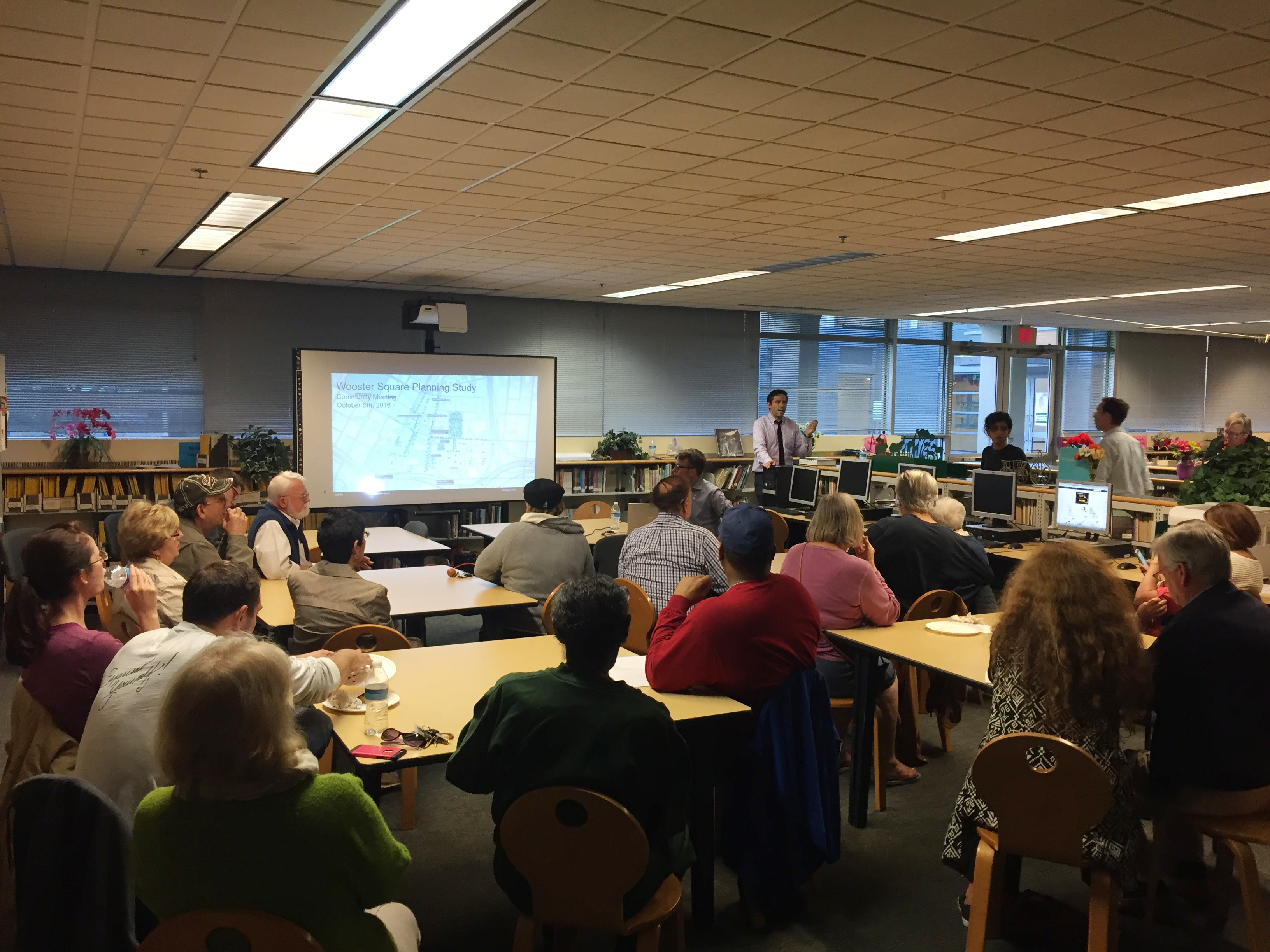
On Wednesday, representatives from Utile Architecture & Planning pitched to Wooster Square residents their vision of a new and reinvigorated corridor between the neighborhood and downtown New Haven.
Utile’s plan looks to bring greater walkability, bicycle access, local identity and sustainable retail to the State Street area as well as better connect Wooster Square to the neighboring downtown region. Since they were awarded a state grant to develop this corridor in 2014, residents and community leaders have met regularly over the past year and a half to discuss future plans for the area. In July, residents chose the Boston-based Utile as well as the transportation firm Nelson\Nygaard Consulting Associates to carry out the renovations. Since then, residents have met with consultants in four community and advisory board meetings to voice their questions and concerns about the redevelopment plan.
Wednesday’s meeting, hosted by Ward 8 Alder Aaron Greenberg GRD ’18, was the last time Utile will convene with the community before joining with New Haven Office of Economic Development to present the final plan to the Downtown Wooster Square Community Management Team later this fall. Then, the Office of Economic Development and Utile hope to receive approval from the City Plan Commission to begin their work.
“The major thing that I think is exciting about it … is the whole idea of walking and being able to walk downtown,” said Cathy Meyerson, a 14-year resident of the Wooster Square neighborhood.
Utile lead consultant Tim Love spent the first hour of the meeting explaining the plan to residents. Primarily, Utile plans to restore the current State Street area to its historic configuration by reconverting the large road to a two-way street and adding two cycling tracks on the outer edges.
With regard to transportation, the plan seeks to reduce speeding and create a clearer path to and from the State Street train station without reducing the street’s overall capacity. And residentially, the plan would allow the neighborhood to reclaim real estate and stimulate development on the east side of State Street. Ideas for real estate development include mid-rise, multifamily residential buildings with attached ground floor retail.
The team would also like to develop 74,000 to 80,000 square feet of retail space in these new residential buildings. Based on the amount of pre-existing retail in the area and neighborhood expenditure needed to support new retail space, Utile plans to use much of this space for active first-floor uses such as offices, dry cleaners and other services. Lastly, part of the State Street renovations would include corridors for green spaces and plazas to make the neighborhood more attractive to visitors.
Love said the developments would ultimately contribute to Utile’s goal of making State Street into a more pedestrian-friendly community space between the Wooster Street neighborhood and downtown New Haven.
While most parts of Utile’s plan have been well-received by Wooster Square residents, Love conceded that many residents are troubled by the changing nature and modernization of the Wooster Square neighborhood.
“Older residents have mixed feelings about erasing the boundaries that make the neighborhood a separate enclave,” Love said.
Additionally, many residents also expressed concerns during the meeting’s question-and-answer portion that the construction of too many apartment buildings would detract from the walkability and historic appearance of the neighborhood. The Wooster Square Historic District, comprised of the neighborhood’s square, as well as much of its surrounding area, has been listed on the National Register of Historic Places since 1971.
Longtime Wooster Square resident Anstress Farwell also expressed apprehension about the city’s plan to redevelop other streets near the main project on State Street, as previous rezoning projects on Olive and Water streets have contributed to large amounts of traffic in the region, she said.
Despite these concerns, most residents at the meeting appeared to support Utile’s new plans for the Wooster Square downtown corridor. Meyerson, who has attended past community meetings about the project, said the proposed changes are exciting, adding that she believes the neighborhood will be a safer and more livable area, especially for elderly residents.
Wooster Square is home to the famous Frank Pepe Pizzeria Napoletana.







